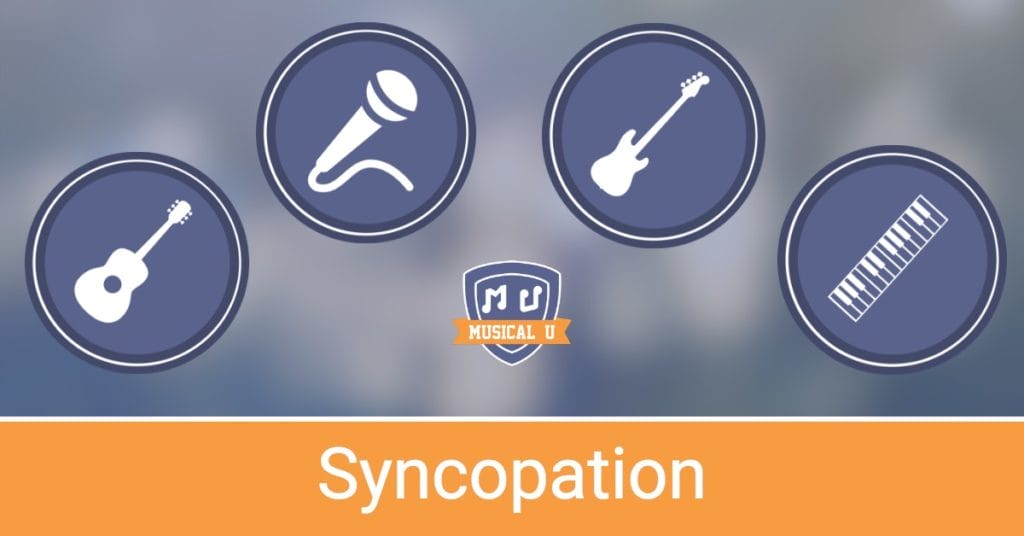Often, when we first learn music rhythms fall squarely on the beats. But many styles of music – jazz, ragtime, most of today’s popular styles, even classical – contain “syncopation”. These rhythms emphasize notes in the unexpected places.
In this month’s Instrument Packs we looked at how to practice syncopated rhythms on your guitar, piano, or bass.
Guitar
Syncopation can be heard in all sorts of popular music: Funk, Jazz, R&B, Soul, and even most Rock and Pop songs derive their rhythmic excitement from syncopation. Resident Pro Dylan Welsh will show you how to recognize these rhythms and accurately produce them in your own rhythm and lead playing:
Including:
- The definition of syncopation, along with a few examples found in popular songs.
- An exercise to develop your syncopated rhythm playing.
- An exercise to develop your syncopated lead playing.
- Practice MP3s to cover all the exercises for both rhythm and lead.
Add some rhythmic pizzazz to your guitar playing, especially if you want to play these heavily syncopated styles of music.
Piano
In the piano pack, Resident Pro Sara Campbell introduces an improvisational approach to amp up your syncopation skills in rhythmic and melodic playing:
Including:
- What Exactly is Syncopation? A terminology rundown and discussion about a couple types of syncopation.
- Syncopation Exercises: three exercises in a variety of keys and styles.
- Tips for Learning Syncopation: If you get frustrated with counting or deciphering scores, these tips will really help.
- Clear Notation: Composers and transcribers, this is for you!
- Play-along MP3 backing tracks to sharpen your syncopation skills.
Enjoy your rhythmic learning as you create while you syncopate (with the added bonus of working through your fluency in all keys).
Bass
The bass is often called upon to punch up the rhythms in the low end. Resident Pro Steve Lawson takes you on a syncopated journey through the various beats and off-beats of a musical measure:
Including:
- Defining Syncopation: What is it? Why is it important for bassists?
- Metronome Practice: Exercises that will help you get a strong internal sense of the beat.
- Shifting Syncopation: Exercises that shift syncopation to different beats.
- A bass insider’s articulation tip to tighten up your syncopated rhythms.
- Jam your syncopated bass lines with a beautiful MP3 backing track.
Once you’ve worked through this pack, you’ll have a deeper understanding and control of just where to place your bass for the desired rhythmic effects.
Singing
Syncopation is our strongest rhythmical tool to make music a lot more interesting and it is used across all genres. You probably use syncopation quite a lot without even knowing what it is! Guest Pro Nina Rosenberger will help you gain a greater understanding in this field, so you can enhance your musical abilities and be even more creative:
Including:
- A discussion about what syncopation is and how we can learn to apply it to songs.
- Important terminology you should know.
- Three unique exercises to get you started with this rhythmic concept!
- Three fun MP3 practice tracks to practice your exercises.
Gain a deeper understanding of how syncopation works, and what you can do with it when you’re singing to add more rhythmic punch to your performance.
Coming up next month…
We’re going to continue to explore rhythmic style with swing rhythm – famously found in jazz, but also throughout blues, early rock ‘n’ roll, pop music, and world styles like Celtic dance.
Interested in getting access to these resources and much more, with an Instrument Pack membership? Just choose that option during checkout when you join Musical U, or upgrade your existing membership to get instant access!







